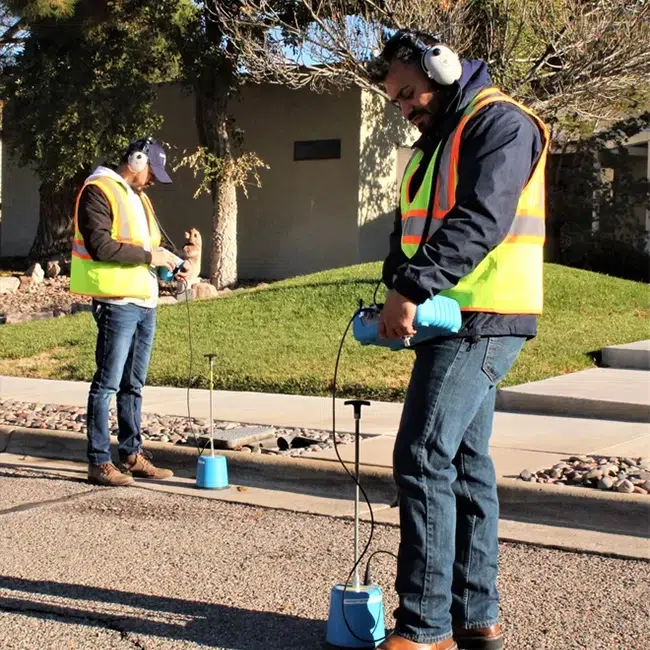Comprehensive Guide to Water Leak Detection for Property Owners and Companies
Wiki Article
Cutting-edge Solutions for Early Detection of Water Leaks in Buildings and Infrastructure
As the integrity of buildings and facilities is extremely important, the difficulty of very early discovery of water leaks has stimulated ingenious solutions that guarantee to revolutionize the means we guard against possible damages. From innovative leak discovery technologies to the release of IoT sensing units for real-time surveillance, the landscape of leakage avoidance is progressing quickly. Machine discovering algorithms offer a look into the future of leakage prediction, while thermal imaging provides a non-intrusive technique for identifying surprise leakages. Automated water circulation evaluation systems are improving how leaks are identified and dealt with, leading the way for a positive method to water leak detection. Each of these options holds the crucial to making sure the reliability and longevity of our constructed setting, motivating a change in the direction of a more lasting and efficient future.Advanced Leakage Detection Technologies
Advanced leak detection technologies, outfitted with advanced sensors and formulas, play a critical role in promptly determining and identifying water leaks in numerous setups. Electromagnetic sensing units can recognize changes in electromagnetic fields caused by water, providing yet an additional layer of leak detection capacity.
IoT Sensors for Real-Time Monitoring
In the realm of contemporary water leak detection, the assimilation of IoT sensing units for real-time surveillance represents a crucial improvement in boosting aggressive leak detection capacities. These sensing units use continuous surveillance of water supply, supplying real-time data on water circulation rates, pressure variations, and temperature level adjustments. By leveraging IoT modern technology, these sensors can identify also the smallest anomalies in water usage patterns, making it possible for very early identification of potential leakages before they intensify into major concerns.IoT sensing units transmit data to a centralized platform, where sophisticated algorithms assess the information and create signals or notifications when abnormalities are spotted. This real-time tracking ability allows homeowner or facility managers to quickly resolve leaks, decreasing water damage, minimizing fixing costs, and conserving water sources.
Moreover, IoT sensors can be incorporated with building monitoring systems, permitting automatic feedbacks to spotted leakages, such as shutting down water shutoffs or activating pumps to mitigate the impact of leakages. Overall, the application of IoT sensing units for real-time surveillance considerably enhances the efficiency and efficiency of water leakage detection in buildings and infrastructure.
Maker Understanding Algorithms for Leak Prediction

One secret benefit of utilizing artificial intelligence for leak prediction is its capacity to constantly discover and boost its accuracy gradually. As even more information is collected and fed into the formula, it can fine-tune its predictions and adapt to transforming problems, eventually raising the integrity of leak detection systems.
Additionally, artificial intelligence algorithms can aid in identifying subtle signs of leakages that might go unnoticed by traditional surveillance approaches. water leak detection. By assessing intricate data embed in real-time, these algorithms can give very early warnings and informs, enabling timely treatment and precautionary maintenance to mitigate prospective water damage and linked prices
Making Use Of Thermal Imaging for Leakage Discovery
Thermal imaging technology offers an appealing approach for discovering water leakages in various systems and frameworks. By utilizing infrared radiation and temperature variations, thermal imaging electronic cameras can identify covert go to the website leakages that are not easily noticeable to the naked eye.One of the essential benefits of thermal imaging for leakage detection is its non-intrusive nature. Unlike conventional techniques that might need getting into walls or floorings to find leakages, thermal imaging enables non-destructive screening. This not only conserves time and minimizes costs however additionally reduces disturbance to the structure or infrastructure being analyzed. Furthermore, thermal imaging can rapidly scan large locations, giving a detailed overview of possible leakage sources in a prompt way. In general, using thermal imaging modern technology enhances the efficiency and accuracy of water leakage discovery, making it a valuable device for keeping the stability of structures and infrastructures.
Automated Water Circulation Evaluation Systems
Exactly how can automated water flow evaluation systems revolutionize the detection and administration of leakages in various systems and facilities? Automated water circulation analysis systems provide an check my source aggressive approach to leakage discovery by constantly keeping an eye on water flow rates and patterns. By developing baseline information, these systems can swiftly identify deviations that may indicate a leak, allowing prompt treatment to stop considerable damages.These systems utilize innovative formulas to examine real-time data and supply immediate informs when abnormalities are found, permitting speedy activity to be taken. In addition, computerized water circulation evaluation systems can be integrated with building monitoring systems or IoT systems, improving general efficiency and enabling remote tracking abilities.
Additionally, the information collected by these systems can be utilized for predictive maintenance purposes, helping to identify prospective powerlessness in the infrastructure before leaks occur. Generally, the execution of automated water flow evaluation systems can dramatically improve leakage discovery and administration practices, eventually bring about cost financial savings, reduced water wastefulness, and increased sustainability in buildings and framework.

Conclusion
In conclusion, the combination of innovative leakage discovery technologies, IoT sensors, artificial intelligence formulas, thermal imaging, and automatic water flow analysis systems uses my explanation ingenious services for very early detection of water leaks in structures and facilities. These innovations enable real-time tracking, prediction of leakages, and efficient detection methods to avoid water damage and wastage. Carrying out these solutions can assist in maintaining the stability and sustainability of water systems in different setups.Report this wiki page